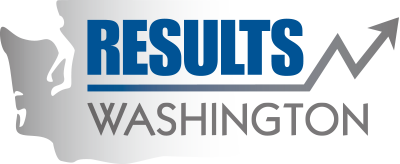Archived: Greenhouse gas emissions from buildings and industrial processes
Fossil fuel energy use in residential, commercial, and industrial buildings and industrial processes (RCI) are the third largest source of greenhouse gas emissions for Washington State after transportation and electricity energy consumption - 19.7 MMT or 20.1 percent of state GHG emissions in 2010. The measure target of 18.6 million metric tons per year by 2020 is the RCI sector’s proportionate share of the GHG emission target established by the Washington State Legislature in 2007; returning Washington State to 1990 emission levels. The pie charts below show the fuel source of the GHG emissions associated with these three sub-sectors for 2011.
Department of Commerce preliminary calculations indicate a three year trailing average GHG emissions of 19.8 MMT in 2014. Because a large share of GHG emissions in the RCI sector is associated with space heating, emissions from this sector will vary significantly from year to year depending on the severity of the winter. As with outcome measure 1.2 a three year trailing average technique is used to smooth the annual variance.
- Making our public buildings more efficient. The state has invested more than 200 million in capital grants for efficiency upgrades (K-12, higher education, local governments, and state agencies).
- Working on achieving the 70% efficiency improvement target in our state energy code by 2030.
- Working to expand the traditional tests for cost benefit analysis of building efficiency projects. Because low natural gas prices make it hard to justify efficiency investments using current tools, the state has taken steps to internalize the costs of GHG emissions when assessing the cost-effectiveness of building energy efficiency measures.
- Expand financing options to make it easier to retrofit existing buildings. These include pilot projects for utility on-bill financing/repayment, and leveraging of capital clean energy loan funds for energy efficiency projects.
- Provide businesses and homeowners with access to energy use, efficiency and cost information through utility disclosure and other means.
- Continue and expand support to vulnerable and low income populations through weatherization assistance to get off oil heat.
- Examine ways to provide statewide branding and marketing of energy efficiency tied to consumer protection and easy access to information.
New building efficiency standards are established by the State Building Code Council with public input. For the latest information on new building efficiency standards, visit the link below.
